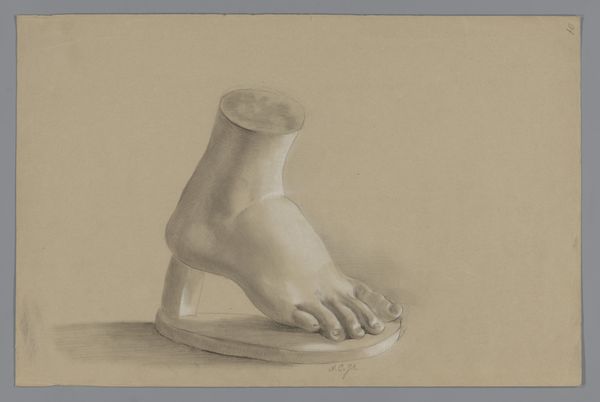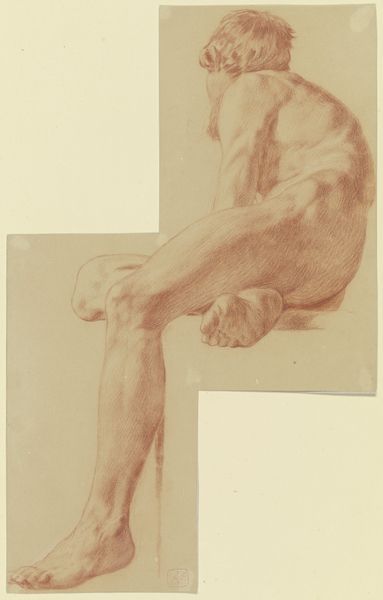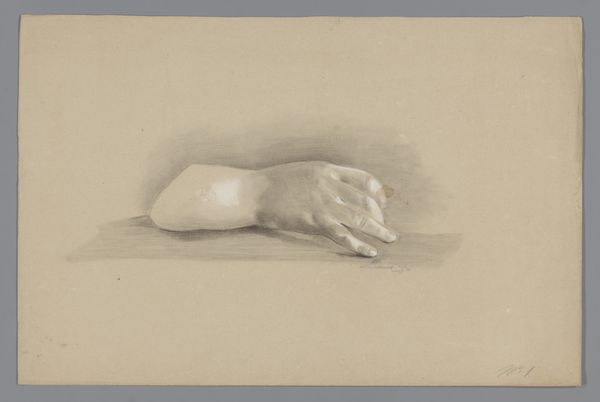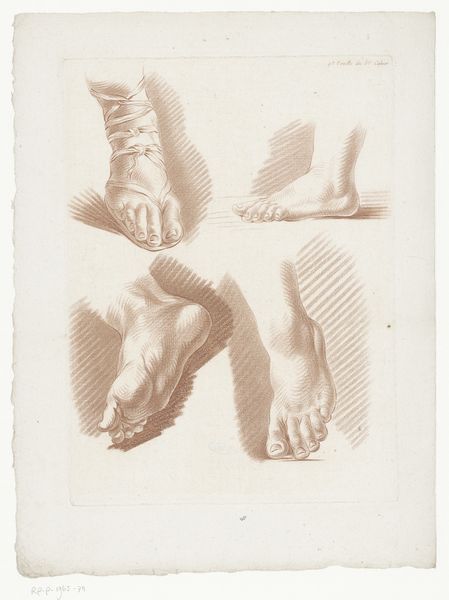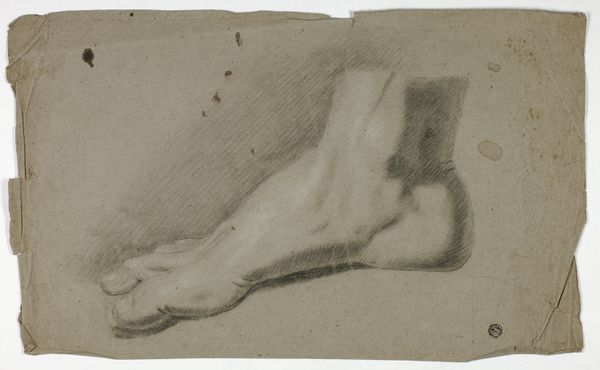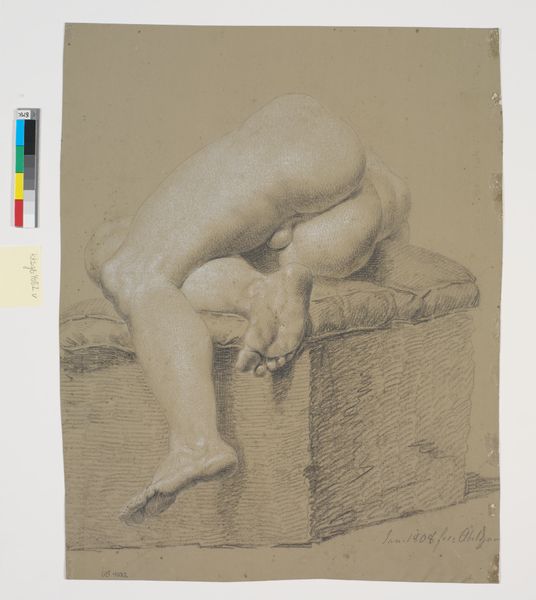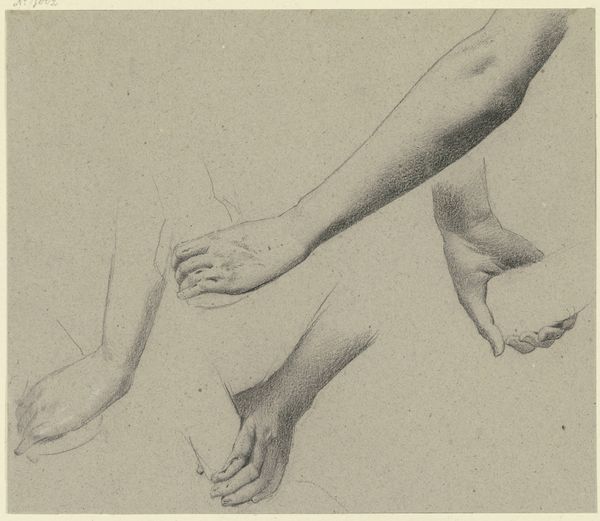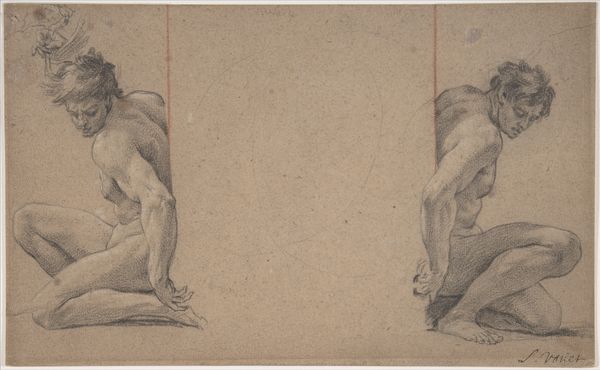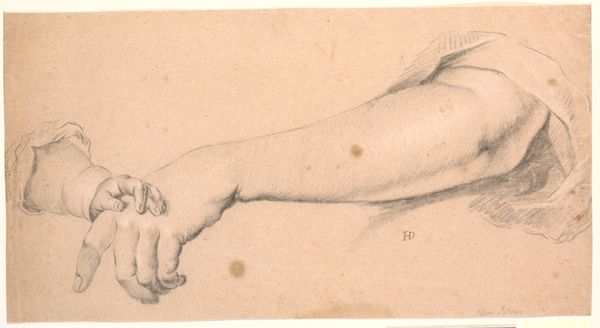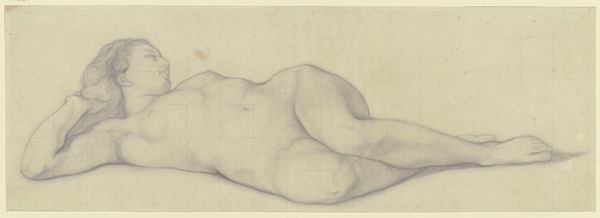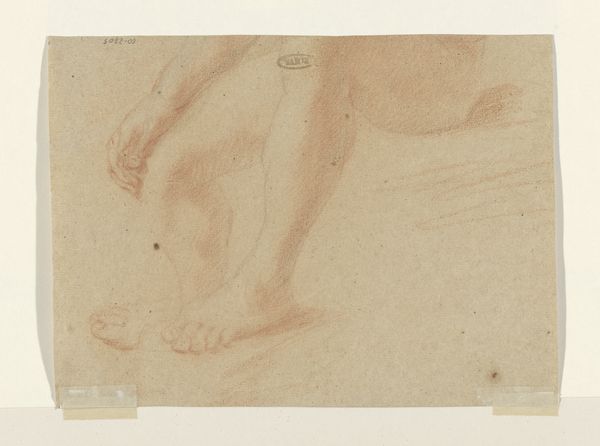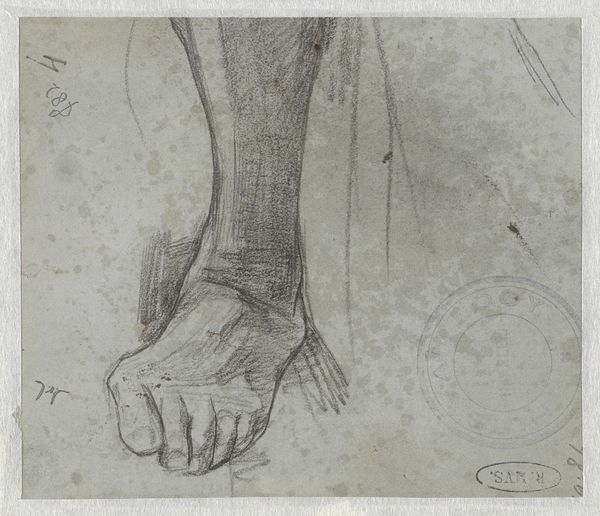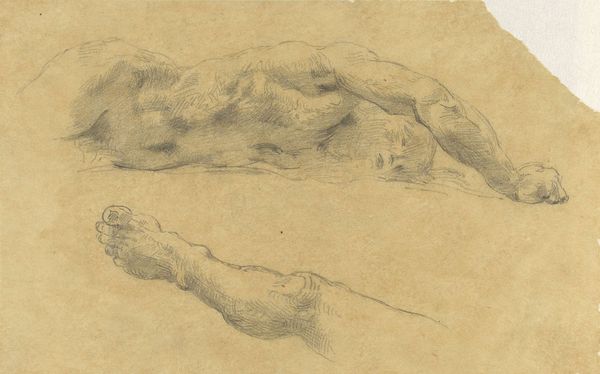
drawing, pencil, graphite
#
portrait
#
pencil drawn
#
drawing
#
charcoal drawing
#
figuration
#
pencil drawing
#
pencil
#
graphite
#
portrait drawing
#
academic-art
#
realism
Dimensions: height 315 mm, width 480 mm
Copyright: Rijks Museum: Open Domain
This is Alexander Cranendoncq’s chalk drawing of a plaster cast of a foot, currently located in the Rijksmuseum. In the 19th century, plaster casts were crucial tools for artistic training. Students would copy these models to learn about anatomy, proportion, and the handling of light and shadow. This drawing gives us insight into the academic methods that shaped artistic production in the Netherlands at the time. The use of plaster casts reflects a desire to emulate classical ideals of beauty and form. By studying and reproducing these forms, artists hoped to achieve a similar level of perfection in their own work. To understand this work better, we might research the curriculum of art academies in the Netherlands during the 19th century. We could also look at the history of plaster casting and its role in the dissemination of classical art. This drawing isn't just an aesthetic object, it's a window into the art world's institutional practices and its relationship to the past.
Comments
No comments
Be the first to comment and join the conversation on the ultimate creative platform.
